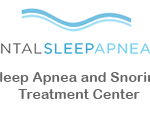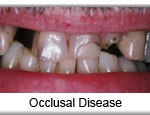Do I really need to floss?
Never in my 30-year career as a dentist has one article stirred so much questioning, controversy, and disbelief by my patients as the August 2, 2016 article written by the Associated Press entitled “Medical benefits of dental floss unproven.”
The article points out that the Department of Health and Human Services removed flossing recommendations from this year’s federal Dietary Guidelines without notice. The Department of Health and Human Services acknowledged to the AP that there is not enough scientific research to include flossing recommendations into their guidelines as required by law. A review of flossing studies is fraught with the research of short durations and small sample sizes, thus making them inconclusive.
I just used three search engines researching: “lighting my hands on fire with matches.” I didn’t find any peer-reviewed credible research telling me not to do it because it is harmful, let alone painful. Common senses say don’t do it. Likewise, the lack of credible scientific studies on flossing does not mean it’s not good for you. There is not enough research to prove what every dentist and hygienist observes every day scientifically; flossing keeps gums healthy and minimizes decay.
Scientifically proven, food debris and bacteria form a complex bacterial matrix between the teeth that make one much more prone to cavities and gum disease. Brushing alone only cleans 60% of the tooth surface; the other 40% is between the teeth – right under where the floss snaps through between teeth. Dentistry has evolved into what is called Evidence-Based Dentistry (EBD). It has become the golden Standard of Care. By definition, EBD combines the best clinical research, the patient’s needs, and the expertise and daily observations made by practicing dentists in decision making and treatment planning. Where the AP article fails the public is that it leaves out the daily observations and conclusions made by clinicians about flossing.
The AP article also falsely accuses dentists and the manufacturers of dental hygiene products to promote a multibillion-dollar industry with no proven benefit. I wonder how much money I could have saved over the past 30 years if every patient seen by my hygienists didn’t walk out of my office with floss or other flossing aides!
So too bad we couldn’t take a few of those “floss doubters” and have them follow me or any dentist around for a week. We could teach you what healthy gums, aided by flossing, look like. Unhealthy gums are easy to spot – they are red, inflamed, and bleed when touched. Then we can look at the records of those who floss and those that don’t floss. If we compare these two categories, the non-flossers spend much more time and money paying for dental treatment than they could have prevented. But please remember we are there for you when you need us, even if it’s because you don’t floss
 Kelly Jorn Cook, DDS
Kelly Jorn Cook, DDS
